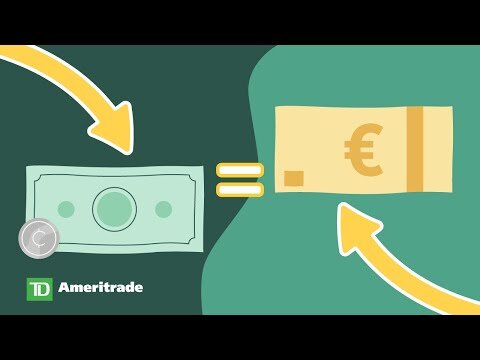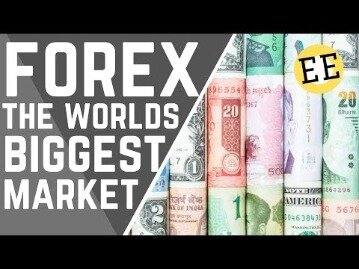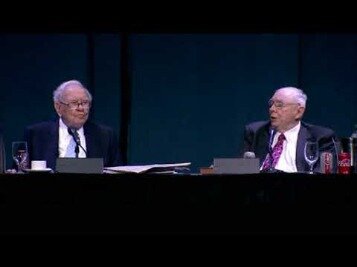Contents:


These measures generally show inflation at or close to our 2 percent longer-run objective . We would be concerned at signs that inflationary pressures were spreading more broadly through the economy. This week, Powell returns to Capitol Hill for two days of hearings under far different circumstances.
Investors will be listening to every word he says, listening to his tone. Fed Chair Jerome Powell gears up to speak at the Economic Club of Washington tomorrow. Investors very keen on what Powell will have to say after January’s blowout jobs report. Here on what we might hear from Jerome Powell is Yahoo Finance’s Alexandra Semenova. “The Fed is wedded to a stale outlook,” Neil Dutta, head of economics at Renaissance Macro, said in an email on Tuesday.
In those remarks, the central bank leader set out a new paradigm for how the Fed views its policy path, one that apparently will see even higher interest rates for a longer period of time than previously thought. “We think the Fed hikes 50bp in March only if inflation expectations, wages, and services inflation reaccelerate dangerously higher and/or incoming data is so strong the median peak rate ends up going up 50,” Guha wrote. “The Fed cannot end a meeting further from its destination than it was before the meeting started.” Sri-Kumar thinks the Fed should have attacked sooner and more aggressively — for instance, with a 1.25 percentage point hike in September 2022 when inflation as measured by the consumer price index was running at an 8.2% annual rate.
Both fuel and nonfuel import prices have fallen in recent months, and indicators of prices paid by manufacturers have moved down. While 12-month core goods inflation remains elevated at 4.6 percent, it has fallen nearly 3 percentage points from earlier in the year. It is far too early to declare goods inflation vanquished, but if current trends continue, goods prices should begin to exert downward pressure on overall inflation in coming months. Stock markets fell nearly 2% following Powell’s remarks, and fed funds futures shifted rapidly.
Biden emphasizes safety of banking system in speech ABA … – ABA Banking Journal
Biden emphasizes safety of banking system in speech ABA ….
Posted: Mon, 13 Mar 2023 21:56:23 GMT [source]
First, due primarily to COVID, mortality over the past few years has far exceeded what had been expected before the pandemic. However, the effect on the labor force is smaller than this because COVID deaths have mostly been among older people, who participate in the labor force at lower rates than younger people. He is also a staff writer at Benzinga, where he has reported on breaking financial market news and analyst commentary related to popular stocks since 2014.
What is the FOMC?
Late last month, the Commerce Department reported that January core personal consumption expenditures were up 4.7%, a slight increase from the 4.6% gain reported in December. However, he said the labor market has shown “only tentative signs of rebalancing” after job openings had outnumbered available workers by a 2 to 1 margin. That gap has closed to 1.7 to 1 but remains well above historical norms.
What’s also unclear is how much of the SVB debacle can be tied to 2018 legislation that loosened regulatory scrutiny for many regional banks and to the actions that the Powell-led Fed took in carrying the law out. The Fed is considering changes to its oversight of midsized banks, including rules that could bring capital and liquidity thresholds closer to strictures that the largest Wall Street firms face, according to a person familiar with the matter. “Powell’s actions to allow big banks like Silicon Valley Bank to boost their profits by loading up on risk directly contributed to these bank failures,” she said in a statement Tuesday. “The market is expecting some movement from his words, but trading any speech is tough, so I would be reacting and not anticipating,” Weston added. “Moving to 50-basis-point would be a sizable change in policy and reversal of the slowing and frankly, would be viewed as undermining Fed credibility,” wrote Lee.
Market Data
Some congressional Democrats may urge the Fed to raise its inflation target to 3% and argue that it isn’t worth risking a deep recession just to lower inflation by 1 more percentage point. Yet so far, Powell has made clear that he opposes any such change out of concern it would undermine the Fed’s inflation-fighting credibility. Many economists say they think inflation will keep falling to roughly 3.5% or 4% but could plateau at that level. Getting it down to the Fed’s 2% target level could require more pain in the form of widespread job losses. Fed officials warned last week that their benchmark rate might have to go higher this year than their previous forecast of roughly 5.1%.

This spending category covers a wide range of services from health care and education to haircuts and hospitality. This is the largest of our three categories, constituting more than half of the core PCE index. Thus, this may be the most important category for understanding the future evolution of core inflation. Because wages make up the largest cost in delivering these services, the labor market holds the key to understanding inflation in this category. As figure 1 makes clear, down months in the data have often been followed by renewed increases. It will take substantially more evidence to give comfort that inflation is actually declining.
Given the ongoing upheaval in the economy, some strains and surprises are inevitable. The job of monetary policy is to promote maximum employment and price stability as the economy works through this challenging period. As the pandemic struck, restaurant meals fell 45 percent, air travel 95 percent, and dentist visits 65 percent. Even today, with overall gross domestic product and consumption spending more than fully recovered, services spending remains about 7 percent below trend. Total employment is now 6 million below its February 2020 level, and 5 million of that shortfall is in the still-depressed service sector.
Current market pricing moved higher following Powell’s remarks, to a range of 5.5%-5.75%, according to CME Group data. Federal Reserve Chairman Jerome Powell on Tuesday cautioned that interest rates are likely to head higher than central bank policymakers had expected. Though Powell added the caveat that if we continue to get higher inflation reports or jobs reports the Fed may need to raise rates more than what’s been price in by investors. Federal Reserve Chair Jerome Powell said Tuesday the “disinflationary process” in the U.S. economy rbc financial group director, global fx production has begun, and said additional rate hikes will likely be necessary to bring inflation back to its 2% target. WASHINGTON — The Federal Reserve pumped up its benchmark interest rate Wednesday by three-quarters of a point for a fourth straight time to fight high inflation but also hinted that it could soon reduce the size of its rate hikes. Federal Reserve Chairman Jerome Powell set out a new paradigm for how the central bank views its policy path, one that apparently will see even higher interest rates for a longer period of time.
A recap of Fed Chair Powell’s inflation and interest rates comments to the Senate
My colleagues and I are acutely aware that high inflation is imposing significant hardship, straining budgets and shrinking what paychecks will buy. This is especially painful for those least able to meet the higher costs of essentials like food, housing, and transportation. Price stability is the responsibility of the Federal Reserve and serves as the bedrock of our economy. In particular, without price stability, we will not achieve a sustained period of strong labor market conditions that benefit all. The Federal Reserve seems destined to downshift its rate hike cadence, confirming the market view that the central bank will get even more dovish as 2023 progresses.
The U.S. Labor Department reported the economy added 517,000 jobs in January, far exceeding economist estimates for 187,000 new jobs. The new job market paradigm is so unusual that existing models aren’t working to predict employment patterns accurately. The tight labor market has resulted in a big boost in worker wages that nonetheless have failed to keep up with inflation.

The Fed has sharply raised interest rates in the past year to combat accelerating prices, and year-over-year inflation has dropped for seven straight months. A number of lawmakers and central bank watchers are criticizing the Powell-led Fed board for wholeheartedly signing on to a Republican-driven agenda in 2018 to loosen regulation on banks smaller than behemoths such as JPMorgan Chase & Co. and Bank of America Corp. They argue that Powell and his team at the time — some of whom have since left the Fed — are at least partly responsible for the problems at SVB. Stocks fell sharply while Treasury yields jumped after Powell’s remarks were released. Market pricing also titled sharply to a strong possibility of a 0.5 percentage point interest rate hike when the Federal Open Market Committee meetings March 21-22. The speech comes with markets generally optimistic that the central bank can tame inflation without running the economy into a ditch.
ING economists see increasing chance that Fed will have to pare bond buying before year end
Fed policy makers stepped down to a 25 basis-point increase last month after a half-point move in December and four jumbo 75 basis-point rate increases last year. Powell will deliver the latest semiannual report on monetary policy and the economy on Tuesday to the Senate Banking Committee and on Wednesday to the House Financial Services panel. Powell’s testimony will probably be his last public remarks before the next policy meeting of the Federal Open Market Committee, or FOMC, on March 21-22.
- Markets already had been pricing in about a 65% chance that the Fed would step down its interest rate increases to half of a percentage point in December, following four successive 0.75-point moves, according to CME Group data.
- Asked about Friday’s stronger-than-expected December jobs report, Powell said the strong labor market, “shows you why we think will be a process that takes a significant period of time.”
- Mike Wilson, on the stage, said that this was purely the January effect taking place.
- Unfortunately, the tight labor market is likely undermining the Fed’s efforts to get prices under control.
- Asked about the time it might take for inflation to return to the Fed’s 2% target, Powell suggested this process would likely take into next year.
Powell testified on Tuesday that inflation and employment remain well below the Fed’s targets, meaning easy monetary policy is likely to stay in place. The uptick in long-dated Treasury yields has kept investors on edge in recent weeks as higher borrowing costs weigh on high-growth tech stocks. Higher bond yields can also start to attract investors, who may find bonds’ relative safety attractive if debt can offer a somewhat reasonable rate of return. “There’s certainly a link,” Powell said, a position he has resisted taking in the past. “There are many factors contributing to what’s happening in markets right now, and monetary policy I certainly would agree is one of them.” Sen. Pat Toomey, R-Pa., suggested that the Fed’s easy monetary policy is contributing to “bubbles,” citing the recent GameStop trading frenzy and rises in inflation-linked bonds, real estate prices, some commodities and other assets.
However, economists at Wall Street banks such as Deutsche Bank and Jefferies, see the figure coming in way above consensus estimates. Powell said the current trend shows that the Fed’s inflation-fighting job is not over. And then legendary https://day-trading.info/ short-seller Jim Chanos made a really interesting point. He said that once you see meme stocks rally– he called it “the garbage.” His words, not mine– that’s usually an indication of the end of the rally, not the beginning.
TikTok has your data even if you’ve never used the app: Report
Signs of the economy’s continued resilience have reduced fears of recession. But they have also heightened concerns that inflation will be harder to conquer. “The disinflation momentum we need is far from certain,” Mary Daly, president of the Federal Reserve Bank of San Francisco, said in a speech Saturday.

Wage increases are essential to support a rising standard of living and are generally, of course, a welcome development. Broad-based measures of wages that adjust for compositional changes in the labor force, such as the employment cost index and the Atlanta Wage Growth Tracker, show wages moving up at a pace that appears consistent with our longer-term inflation objective. These favorable conditions for job seekers should help the economy cover the considerable remaining ground to reach maximum employment.
The Fed
As figure 3 shows, however, overall housing services inflation has continued to rise as existing leases turn over and jump in price to catch up with the higher level of rents for new leases. But as long as new lease inflation keeps falling, we would expect housing services inflation to begin falling sometime next year. Indeed, a decline in this inflation underlies most forecasts of declining inflation. Information provided on Forbes Advisor is for educational purposes only. Your financial situation is unique and the products and services we review may not be right for your circumstances. We do not offer financial advice, advisory or brokerage services, nor do we recommend or advise individuals or to buy or sell particular stocks or securities.
According to the CME FedWatch tool, market expectations for a half a percentage point rate hike at the March Fed meeting doubled to 70% in no time. When we polled investors last week, more than half agreed with DoubleLine Chief Investment Officer Jeffrey Gundlach that they’d rather watch the bond market than listen to what Fed officials are saying about the central bank’s path. Since the bond market is suggesting monetary policy will be a lot easier than officials are, we have a classic case of financial markets fighting the Fed. Policymakers and analysts generally believe that, as long as longer-term inflation expectations remain anchored, policy can and should look through temporary swings in inflation. Our monetary policy framework emphasizes that anchoring longer-term expectations at 2 percent is important for both maximum employment and price stability. “If the totality of the data were to indicate that faster tightening is warranted, we would be prepared to increase the pace of rate hikes,” the central bank leader said in prepared remarks for appearances this week on Capitol Hill.
Guha said it’s likely Powell could guide the Fed’s endpoint for rate hikes — the “terminal” rate — up to a 5.25%-5.5% range, or about a quarter point higher than anticipated in December’s economic projections from policymakers. But the declines are very modest so far relative to earlier increases and still leave wage growth well above levels consistent with 2 percent inflation over time. But for wage growth to be sustainable, it needs to be consistent with 2 percent inflation.

